Did you know that blue colored fruits are high in the antioxidants and vitamins? Here are 31 healthy blue fruits you have to try!
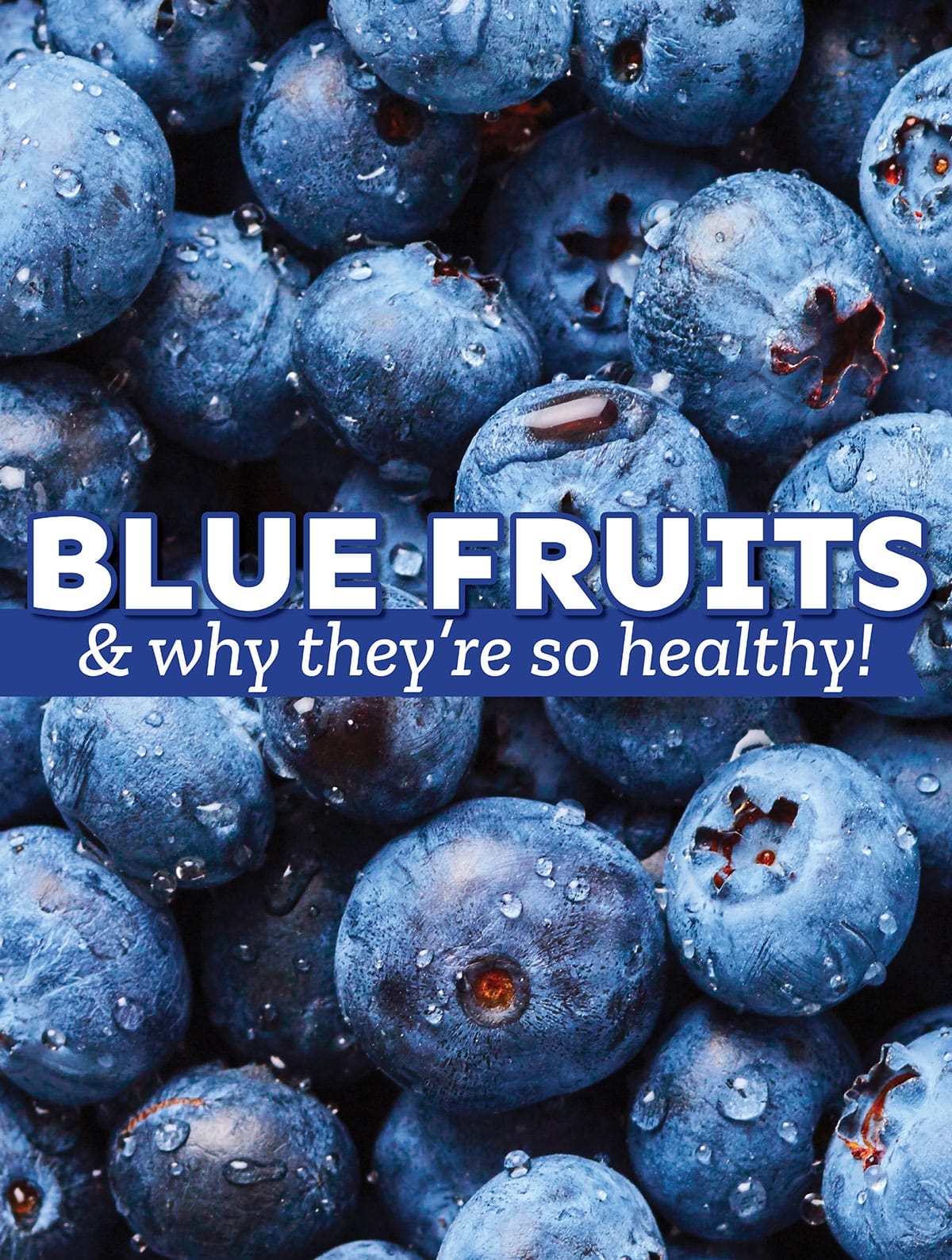
Are you looking for a specific blue fruit? Here are 31 blue fruits along with some helpful information about each. So if you are just trying to add some blue fruits to your diet for their well known antioxidant contents, or perhaps just looking to add color to your cooking, here are a bunch for you to discover!
Are blue fruits healthy?
Blue fruits are widely recognized as nutritionally healthy foods for their antioxidant benefits. The rich blue color hints to their high anthocyanin content, which are a group of plant compounds called polyphenols that produce the blue color (the same goes for purple veggies and blue veggies!). The Mayo clinic states that these compounds may prevent chronic diseases such as heart disease, diabetes, and some cancers.
Nutritional Information for the Most Common Blue Fruits
Here are a few common blue fruits and their nutritional benefits (per a 100g, 3.5 oz serving). Vitamin values are the % of your RDA, and fiber values are in grams.
| Calories | Vit. A | Vit. C | Vit. K | Fiber | |
| Blueberry | 57 | 1 | 16 | 24 | 2.4 |
| Blackberry | 43 | 4 | 35 | 25 | 5.3 |
| Plum | 46 | 7 | 16 | 8 | 1.4 |
| Blue Grape | 67 | 2 | 7 | 18 | 0.9 |
| Black Currant | 63 | 5 | 302 | 0 | 0 |
Trivia Time!
Who wrote the song Blue Suede Shoes? (scroll to the end of this post for the answer!)
- Carl Perkins
- Elvis Presley
- Benny Goodman
- John Jensen
Blue Fruits To Try!
- Bilberry
- Black Currant
- Blackberry
- Blueberry
- Blue Agave
- Blue Dragon Fruit
- Blue Java Banana
- Blue Marble Fruit
- Blue Olive
- Blue Pearmain Apple
- Blue Sausage Fruit
- Blue Watermelon
- Chokeberry
- Concord Grape
- Damson Plums
- Elderberry
- Filius Blue Pepper
- Honeyberry
- Honeysuckle
- Huckleberry
- Indigo Rose Tomatoes
- Jenipapo
- Jostaberry
- Juniper Berry
- Kastoree Mango
- Laurestine
- Nonna Agnes Blue Beans
- Ribier Grape
- Saskatoon Berry
- Sloe
- Texas Blue Giant Fig
Bilberry
Bilberries look almost identical to blueberries. They are common around Europe, and can be used instead of blueberries in pretty much any recipe. Which is to say, a lot. They are great in sweets like this Easy Blueberry Pie Recipe or Savory Blueberry Grilled Cheese.
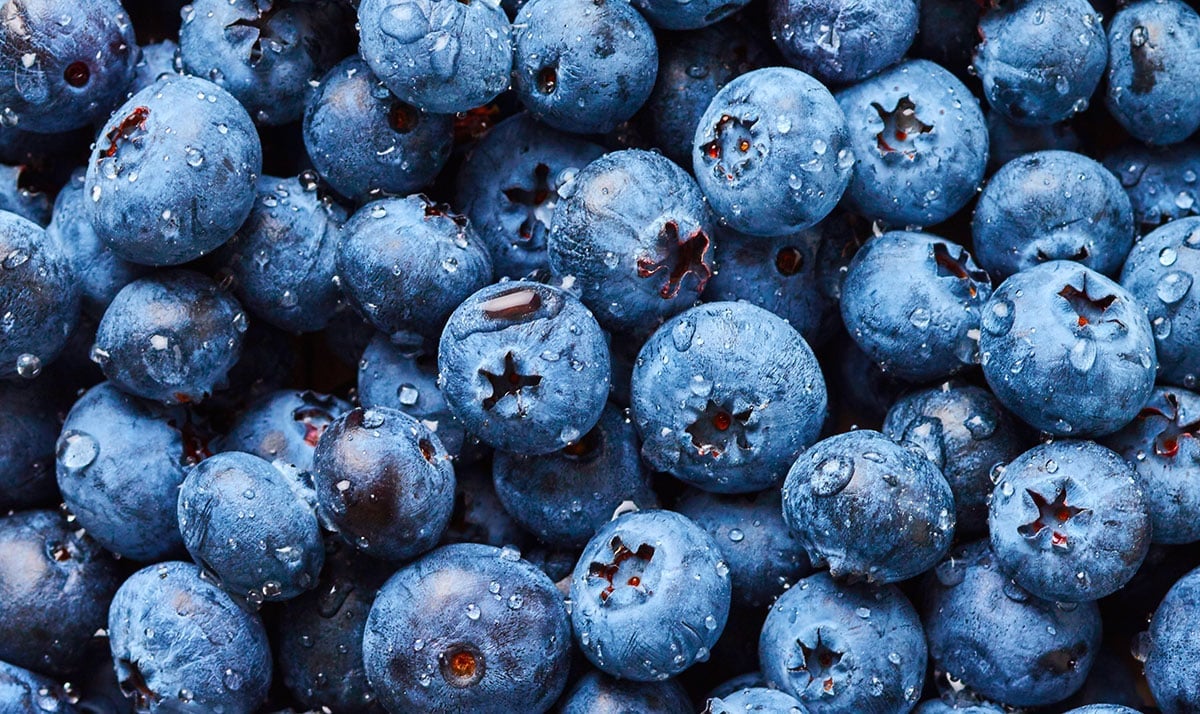
Black Currant
Black Currant are small tart berries native to Europe and Northern Asia. These vitamin C rich berries can be eaten raw, but are usually cooked into both sweet and savory dishes. They are commonly used in wine making as well as jams, jellies, juice, and syrup.
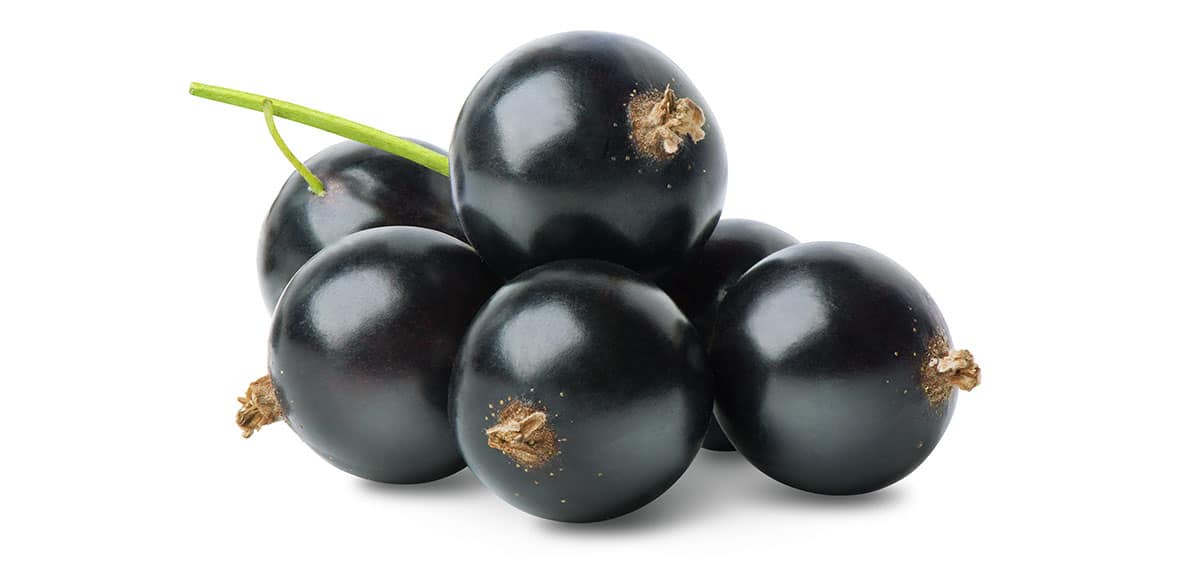
Blackberry
Blackberries grow best in northern temperate climates, and are found widely in the North Eastern United States and Canada as well on the Pacific North coast. You can, however, find them in groceries across the US. They are high in antioxidants and vitamin C, and are great for making preserves as well as a variety of desserts. Try them in this Berry Cabbage Smoothie Recipe (4 ingredients). Yep, cabbage smoothie recipe. Trust us on this one. They are also great on top of yogurt, in blackberry pies, and Homemade Berry Jam.
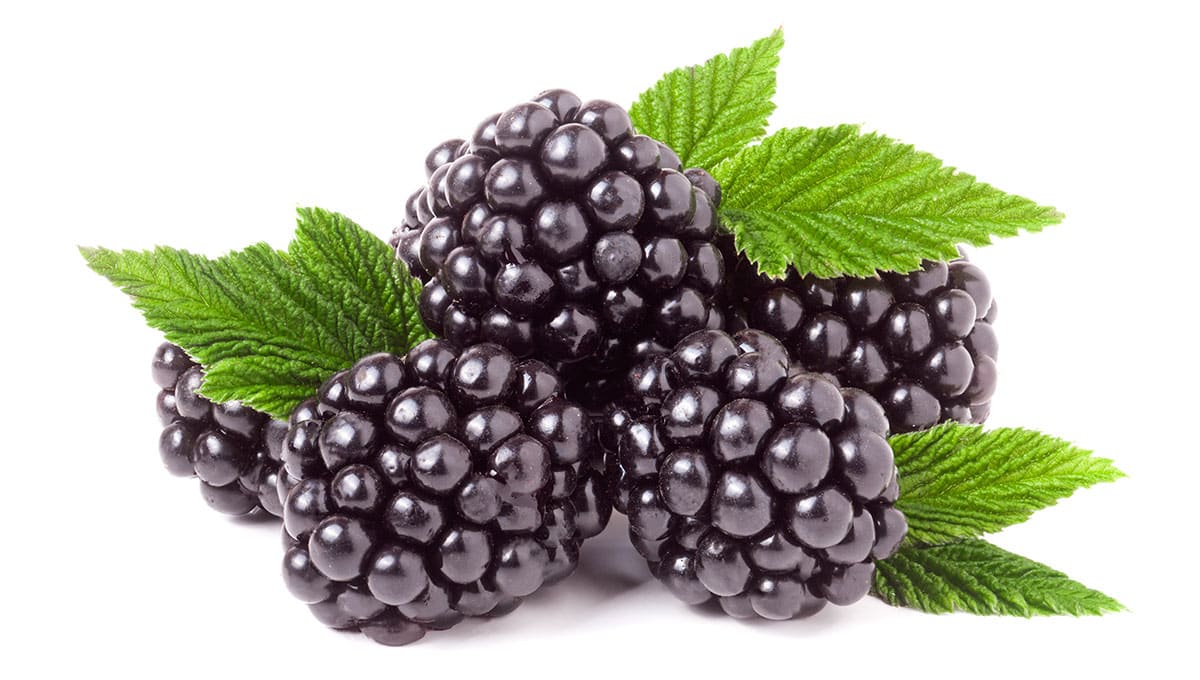
Blueberry
Blueberries are one of only three berries native to North America: blueberries, cranberries, and Concord grapes. There is evidence that humans have eaten them for over 10,000 years. So what is a berry? It’s a fleshy fruit produced from a single flower with no barrier between seed and pulp. That’s the botanical definition anyway. And interestingly enough, by this definition, strawberries are not berries, while bananas are. Things that make ya go hmmm.
Want another fun fact? Dogs can also eat blueberries! If, however, you are more interested in your own culinary satisfaction, how about Frozen Yogurt Covered Blueberry Bites or Blueberry Cheesecake Popsicles, and you don’t have to have popsicle molds to make these. For even more on this worldwide favorite check out Blueberries 101.
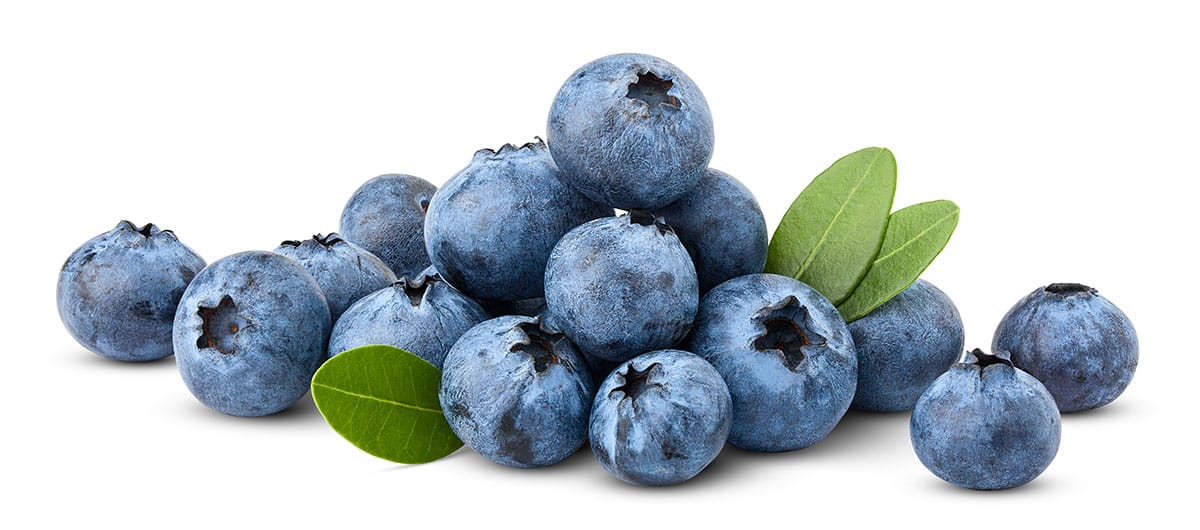
Blue Agave
Blue Agave is a native Mexican plant whose primary superpower is making tequila. The plants can grow very large with spiky leaves reaching over 6 feet long. The leaves produce agave sap which is made into a sweetener often used in lieu of honey or sugar.
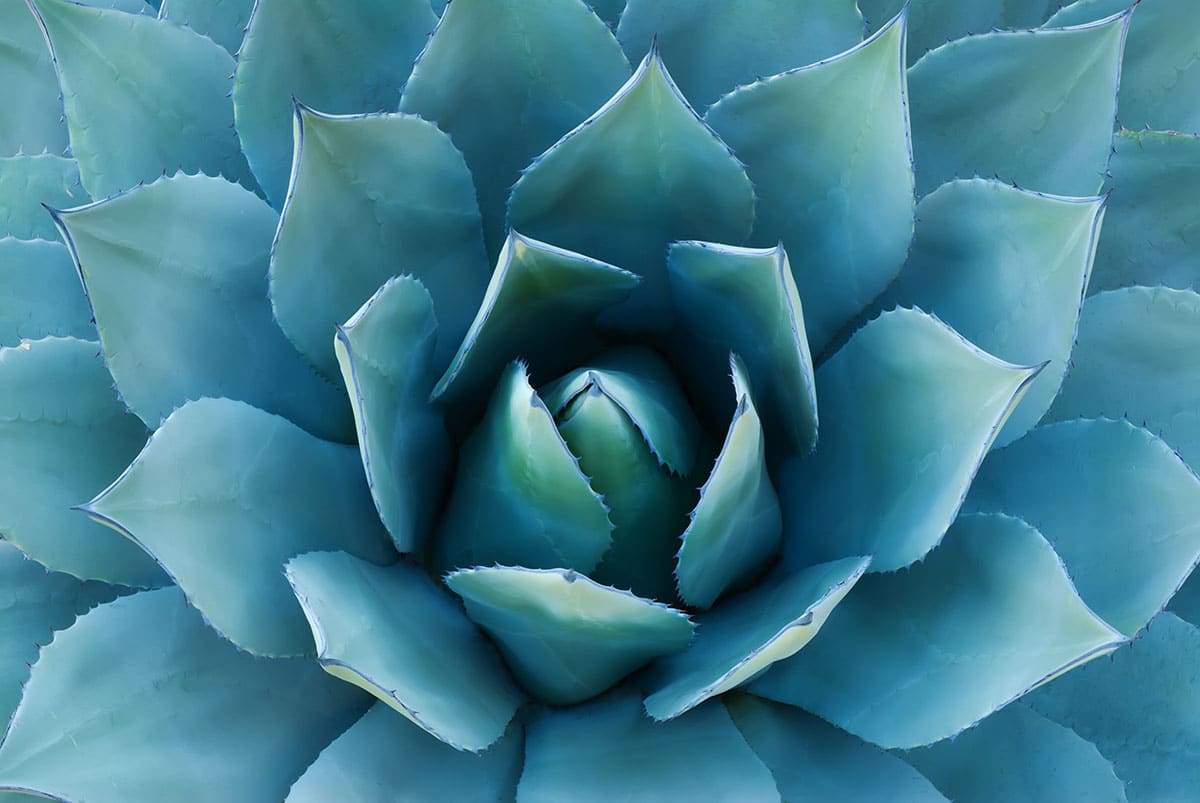
Blue Dragon Fruit
Dragon Fruits are native to South America, and most commonly have red or yellow skins, but can be found in a nutrient dense blue variety. Like most blue fruits they are high in antioxidants, but are also particularly high in vitamins A & C as well as a variety of nutrients. They are a bit tricky to cut, so we published a quick video and pictorial tutorial on How to Cut Dragon Fruit.
Blue Java Banana
Blue Java Bananas are native to SE Asia and Northern Australia. They are not a tropical banana and are known for their tolerance to cooler climates. Blue Java bananas have a taste with a hint of vanilla and an almost ice cream like texture. They would be perfect in any of the “Nice Cream” recipes that use bananas to replicate ice cream. If you haven’t tried this, you really should. How To Make Nice Cream (7 flavor ideas).
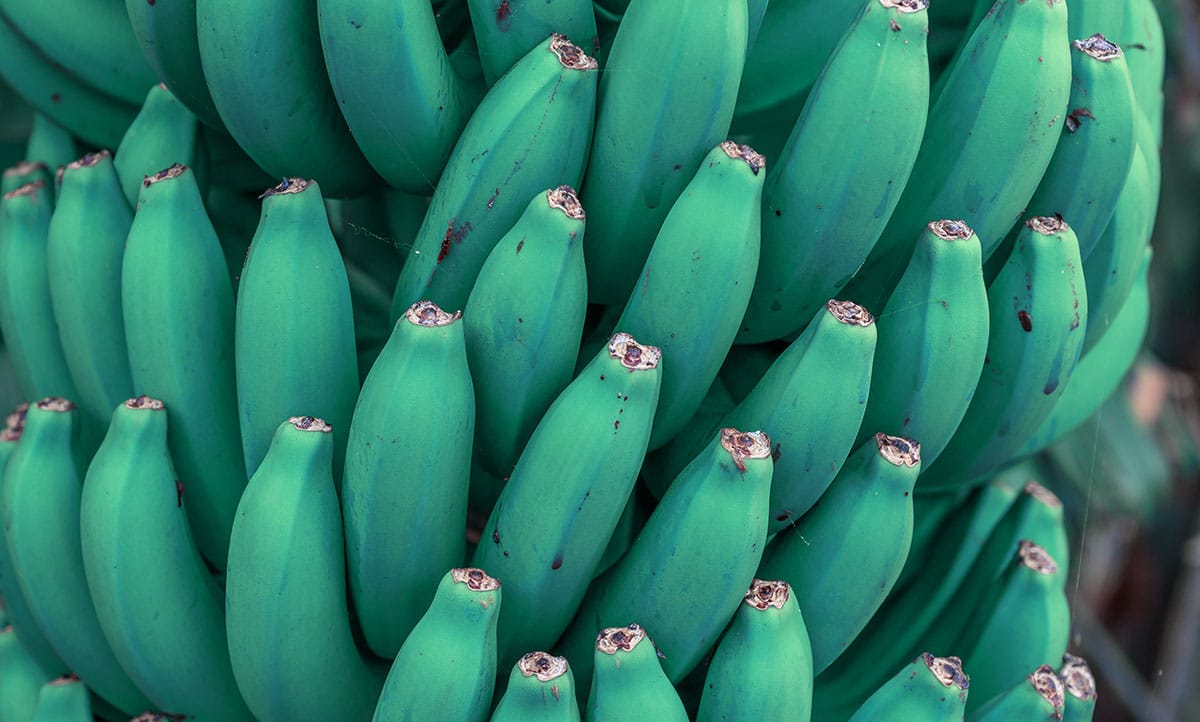
Blue Marble Fruit
Blue Marble Fruits are also known as Blue Quandongs, Blue Figs, or Woodenbega, and are native to Australia. They are small blue skinned berries with a large seed and are said to taste like dates. In Australia they are known as a “bush food” and are used as a flavoring in both savory and sweet recipes. Australian natives have eaten these for centuries often making them into jams and using the seeds for purported medicinal purposes.
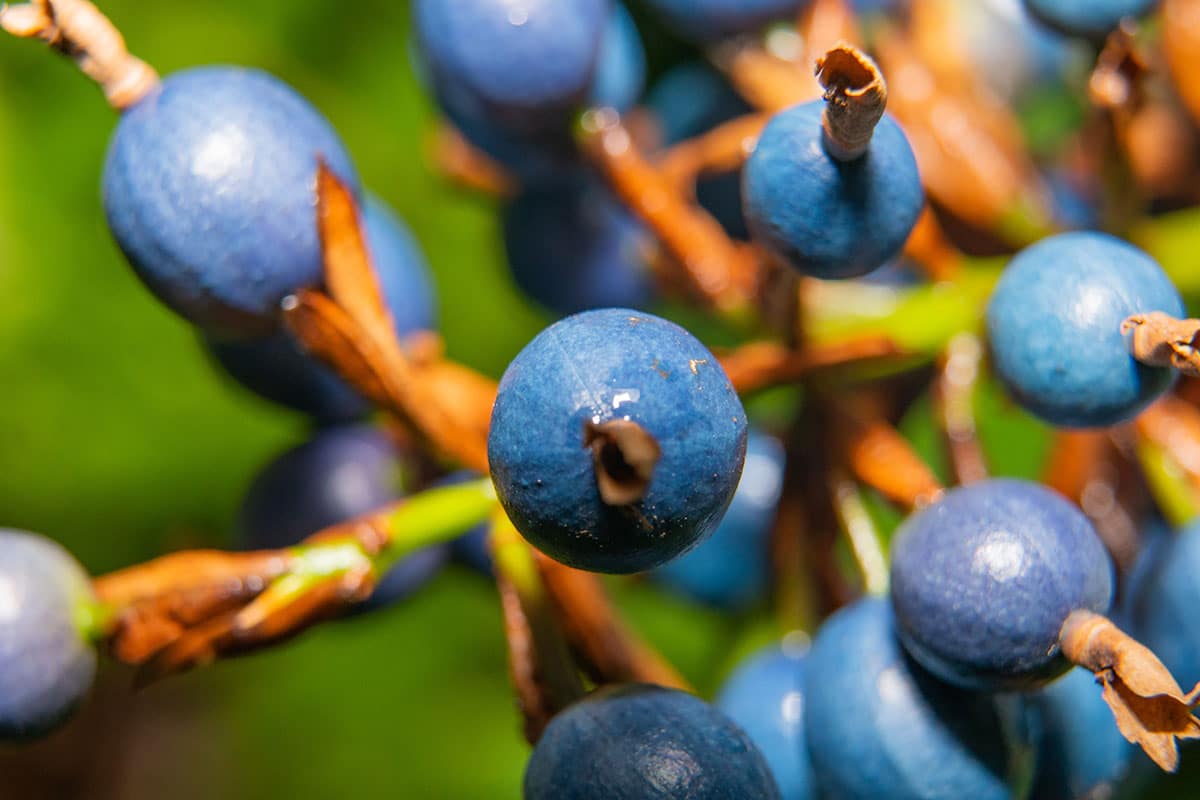
Blue Olive
Blue Olives are sometimes called Ceylon Blue Olives as they are native to the Island nation of Sri Lanka (formerly called Ceylon). While their outer skin is blue, the flesh is green like other olives and are a bit more firm than most olive varieties. Blue olives are known for their slightly sour taste and are used in Sri Lanka and in SE Asia in both sweet and savory cooking.
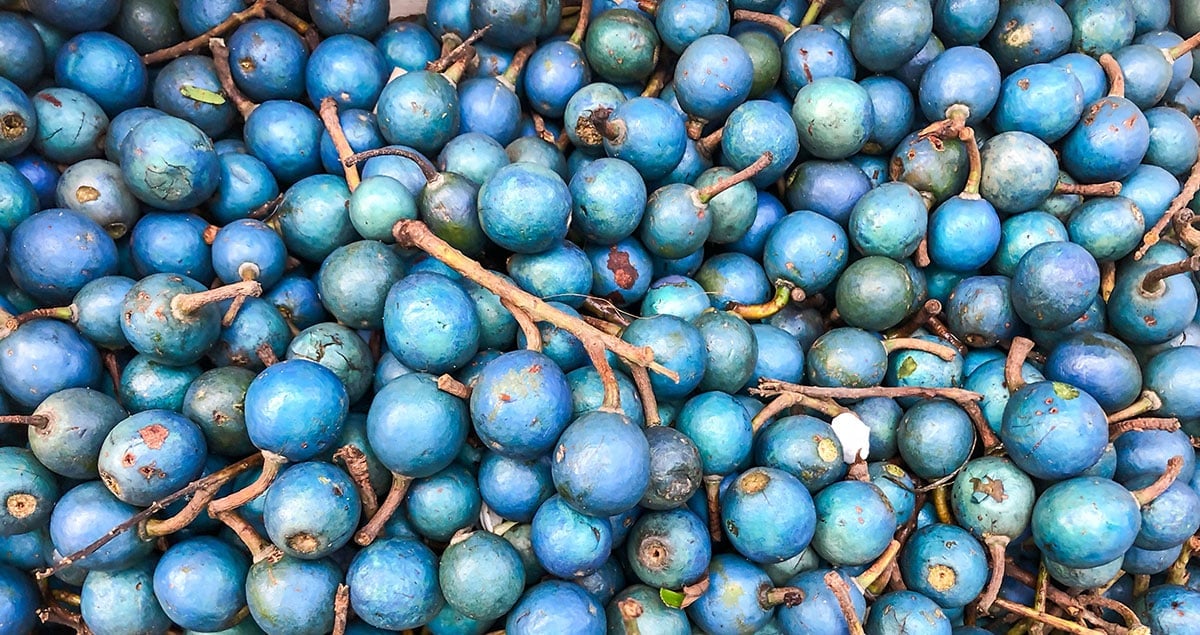
Blue Pearmain Apple
The Blue Pearmain is an American apple variety with a dark purple bluish skin. These are sweet apples which are grown mostly in upstate New York. Unlike many apple varieties which are purposely grown as hybrids of other varieties, the blue pearmain was discovered in New York around 1830 as a naturally produced hybrid apple. There are around 2,500 different apple varieties grown in the United States. For a bit more on some of the most popular check out 29 Types of Apples!
Blue Sausage Fruit
Blue Sausage Fruits are also known as Dead Man’s Finger, and are native to China, Nepal, India, Bhutan, and Myanmar. It is a blue fruit typically 3-5 inches long with a sweet inner pulp and lots of seeds. Its smooth skin gives the fruit its name as it feels rather like a cold finger.
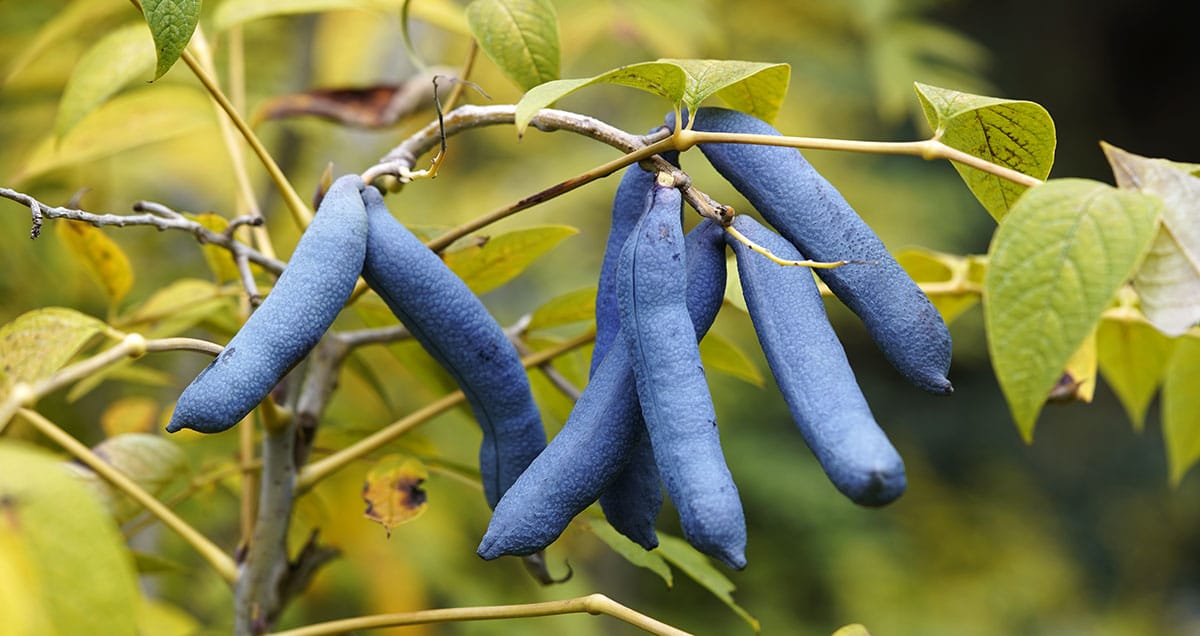
Blue Watermelon
These do not exist. There have been a fair number of posts and even videos circulated on the web extolling the benefits of Purple or Blue Watermelon. Don’t believe them. They are all hoaxes. How cool would a blue watermelon be though? Just imagine the aesthetic summer fruit salads you could make.
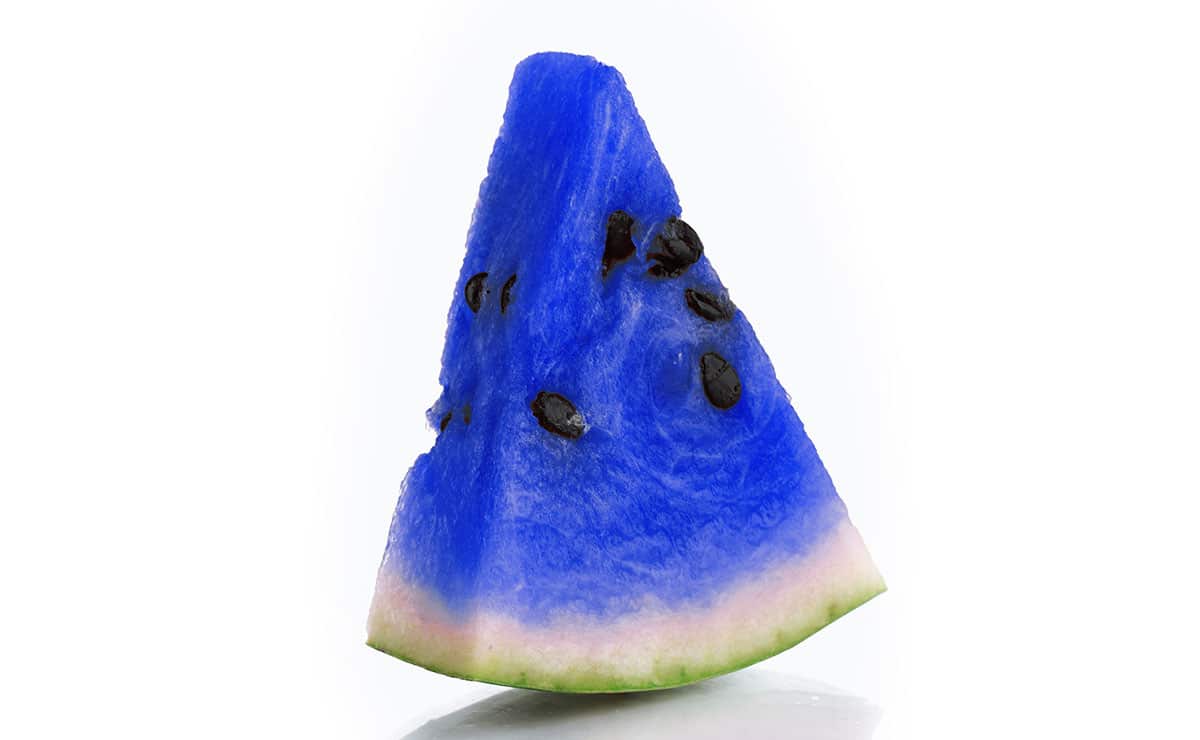
Chokeberry
Chokeberries are also often called black chokeberries due to their extremely dark color. They are native to Minnesota. Their juice is sweet and tart, and they are often used in juice, jams, pies, syrup, tea, and wine making. Like other blue fruits they are high in antioxidants.
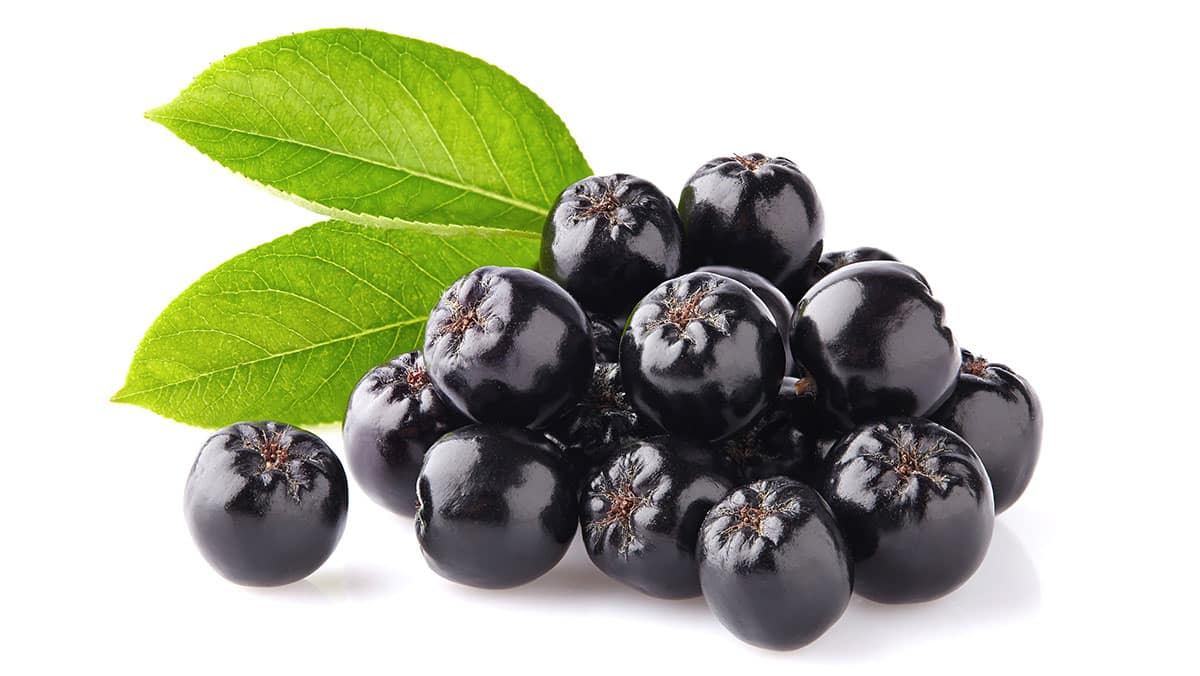
Concord Grape
Concord Grapes are a ubiquitous dark grape used widely in jellies, jams, candies, pies, and wine. They are also eaten whole out of hand by those who don’t mind spitting out the seeds. Concord grapes were developed by Ephraim Bull of Concord Massachusetts in 1849, but are grown today primarily in New York, Michigan, and Washington State. The United States produces over 400,000 tons of these grapes every year. They are a sweet grape with a bit of tartness.
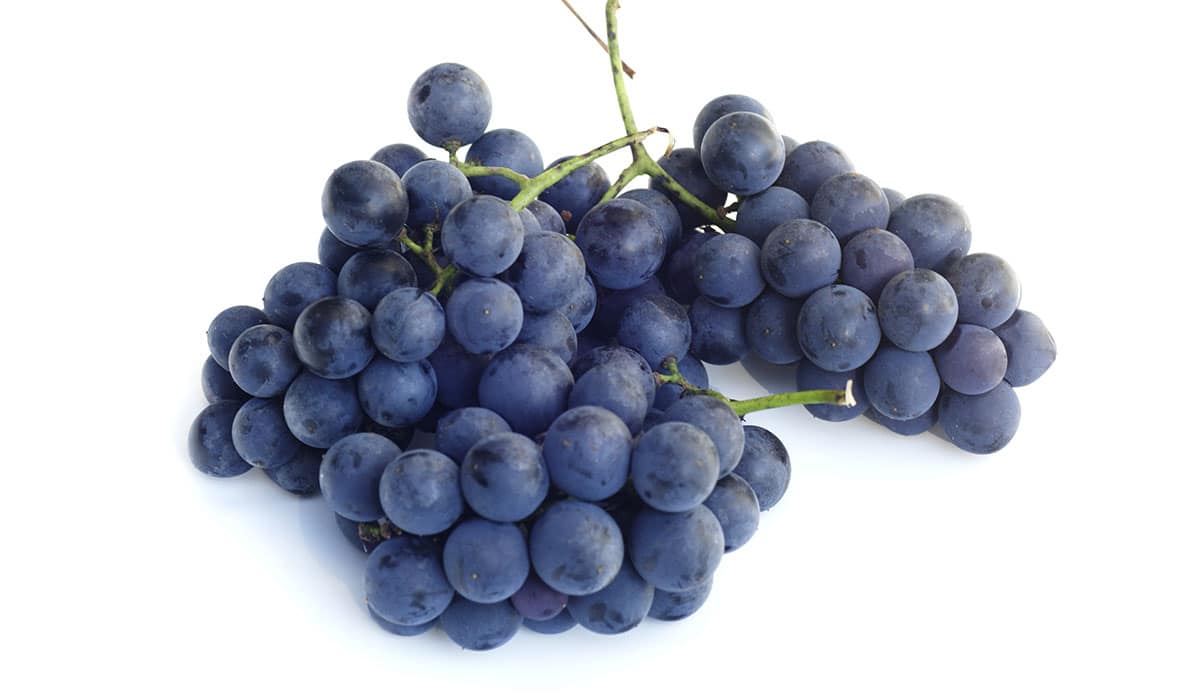
Damson Plums
Damson Plums grow mostly in Europe where they are common in small orchards and outside homes. The smallish oval shaped plums are wonderfully delicious. I can attest to this first hand having lived in Rotterdam for five years. They are great eaten out of hand, but often used in preserves and famously by German bakers in all manner of pastries. We are rather fond of this Plum Cobbler Smoothie Recipe and hope you might try it.
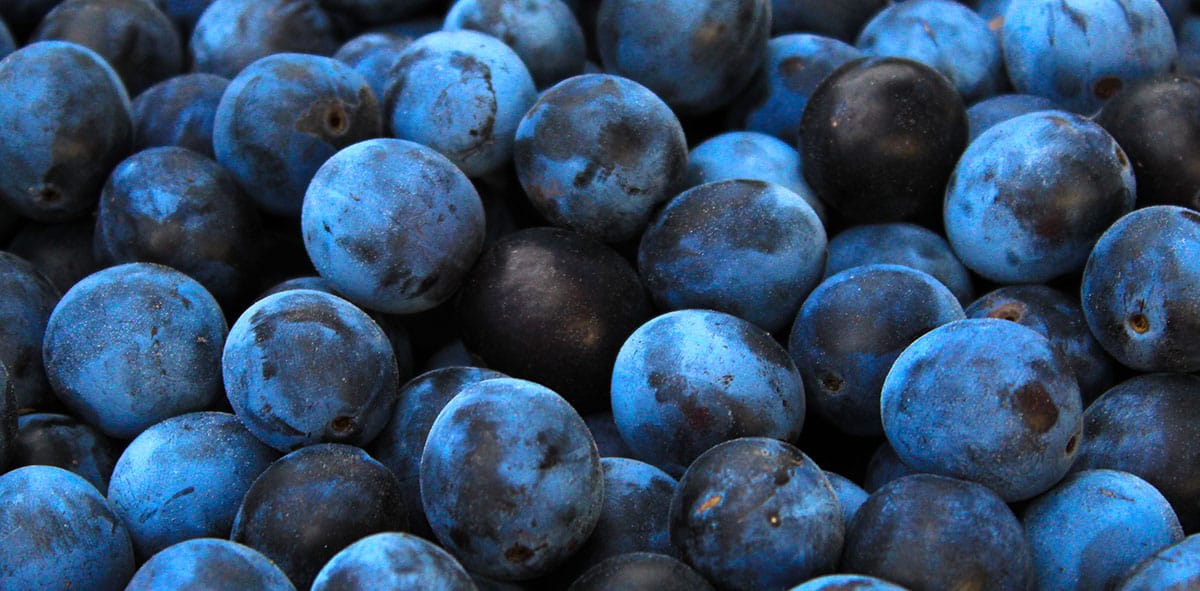
Elderberry
Elderberries are said to be packed with antioxidants and vitamins that are beneficial to your immune system, so they are often used as a dietary supplement to relieve cold and flu symptoms. They are most commonly used in making jams, jellies, syrups, or added to pies and cobblers.
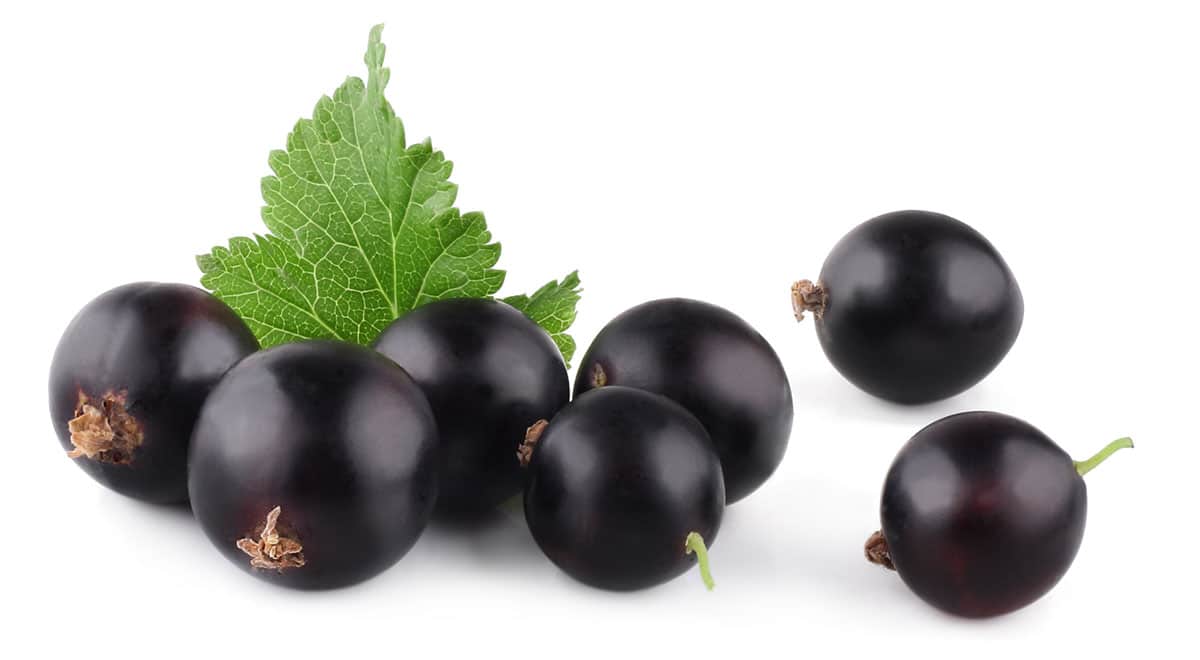
Filius Blue Pepper
Though many consider peppers to be vegetables, they are in fact fruits, and the Filius Blue is a distinctly deep blue variety with a Scoville Heat Unit (SHU) score between 40,000 and 50,000. What does that mean? Well if you want a lot more on peppers and their varying levels of hotness check out Types of Peppers & Their Heat from Mild to OMG! Basically a SHU of 50,000 is 6-10 times hotter than jalapeno peppers and on par with cayenne peppers. These peppers are hot.
Honeyberry
Honeyberries look rather like elongated blueberries. The plants are native to Russia, and have been cultivated for centuries. These very cold tolerant berries taste like something between raspberries and blueberries. They can certainly be used in a variety of recipes in lieu of blueberries or raspberries. For something unique try them, or traditional blueberries, in this Blueberry Grilled Cheese Recipe. Honeyberries are recognized as one of the highest antioxidant containing blue shaded berries, so using these may well give your immune system a lift.
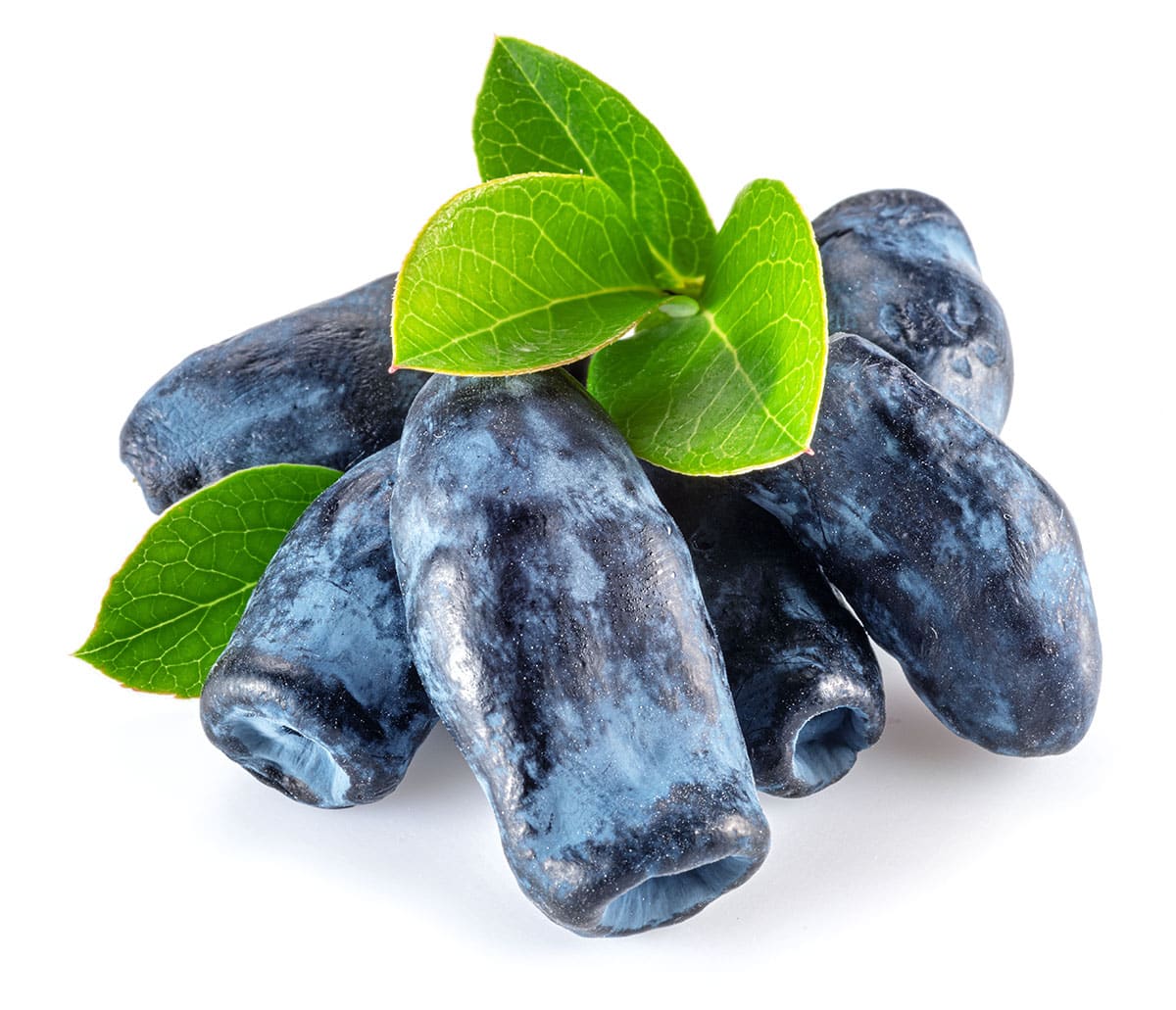
Honeysuckle
Honeysuckles are native to the northern areas of North America and Eurasia. There are about 180 known species, so they come in a variety of colors but mostly red, blue and black. Unfortunately, most species are toxic if eaten in high volume.
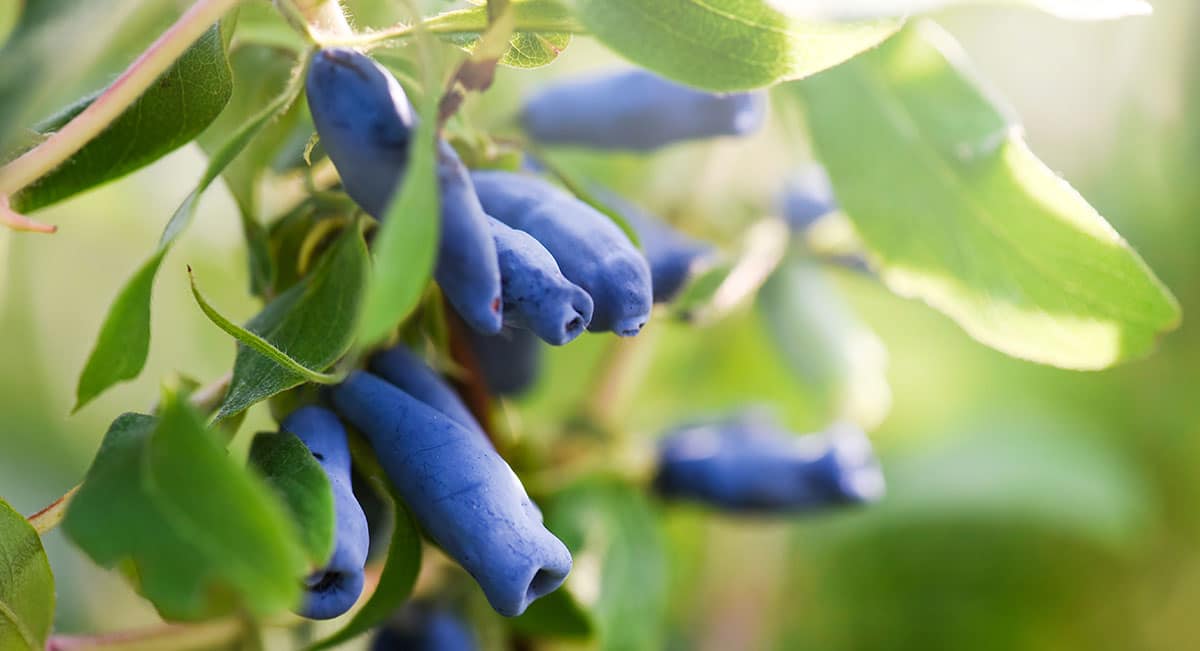
Huckleberry
Huckleberries are similar to blueberries but with larger seeds, and are often found growing wild in the Pacific Northwest. Like other berries, they go great in cobblers, pies, muffins, or preserves. Their tart taste makes them a bit hard to eat raw. Perhaps give them a try in this Berry Breakfast Bake Recipe or our popular Berry Baked Alaska Cookies.

Indigo Rose Tomatoes
Indigo Rose Tomatoes were the first of ten or more blue hue tomatoes that range in size from cherry tomato to 3” diameter varieties. The Indigo was developed at Oregon State University in 2012, and other blue varieties followed. Their color comes from the high level of anthocyanin in their skin though the pulp remains red. Some of these varieties are considered genetically modified organisms because they were created by splicing genes from blueberries or snapdragons into the tomato’s genes.
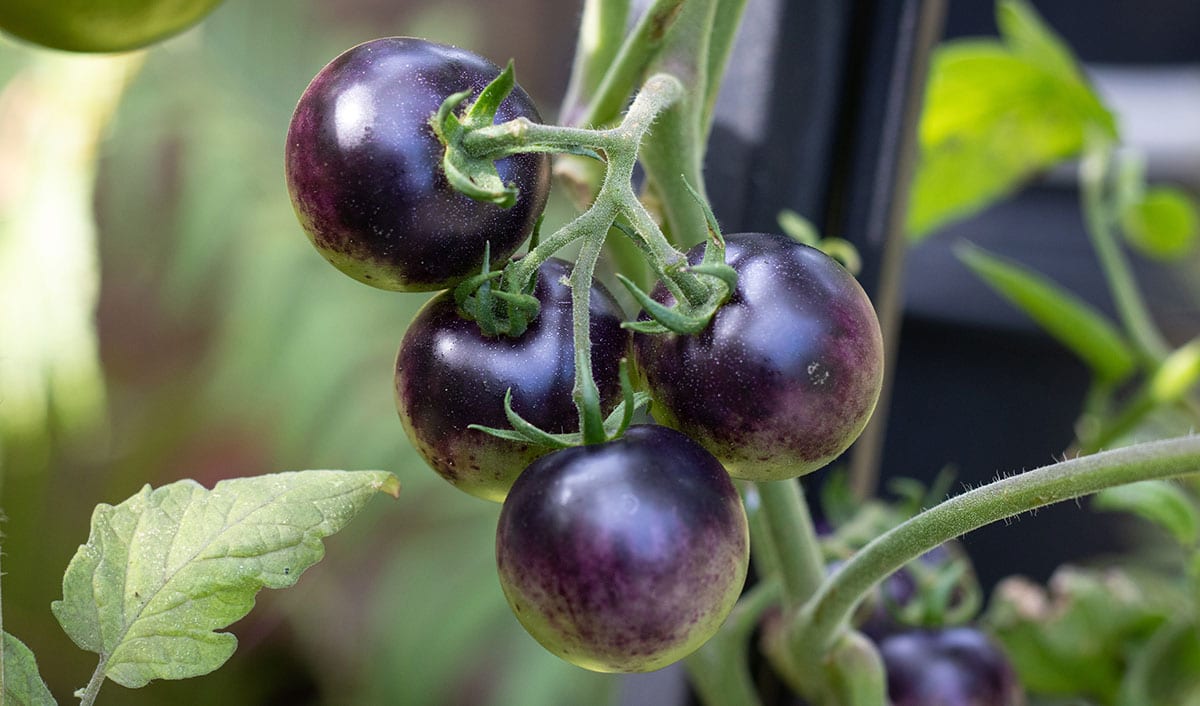
Jenipapo
Jenipapo are native to the Amazon forests of Brazil. The name comes from the indigenous language of the Tupi and means fruit that can be used to paint which is appropriate as the natives have used it for body paint for centuries. The fruit are about the size of kiwis but look rather like dried figs, and have an overripe banana aroma. Culinarily they are used in jellies and liqueurs.
Jostaberry
Jostaberry is a human produced crossbred fruit from the blackcurrant, black gooseberry, and European gooseberry. The Jostaberry is smaller than a gooseberry but larger than the blackcurrant. Its taste is between the gooseberry and blackcurrant, but the gooseberry flavor is dominant. The fruit does not hold up to mechanical harvesting, so commercial production is uncommon and picking them is labor intensive making them expensive. Jostaberries are commonly eaten fresh, made into jams, chutneys, pies, and fruit wines.
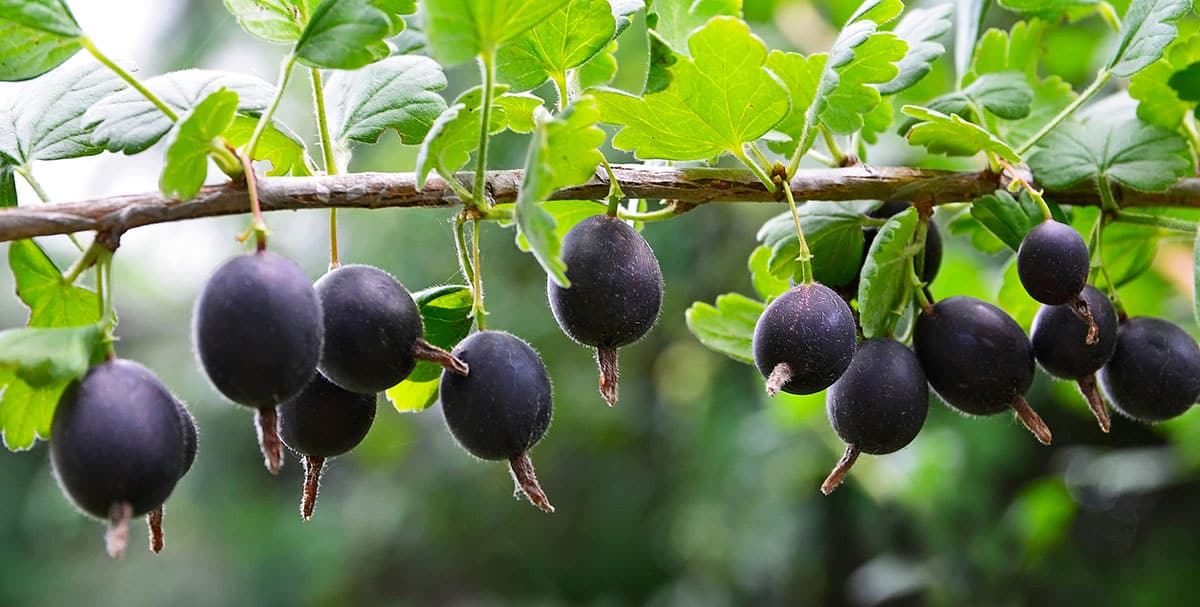
Juniper Berry
Juniper Berries are grown in Asia, Europe, and the Western United States. Their best-known use is in the making of Gin. Due to their strong flavor, they aren’t often eaten on their own but are used as a flavoring in teas, meat recipes, and sauerkraut. Making gin seems like a sufficient claim to fame for the juniper berry to us.
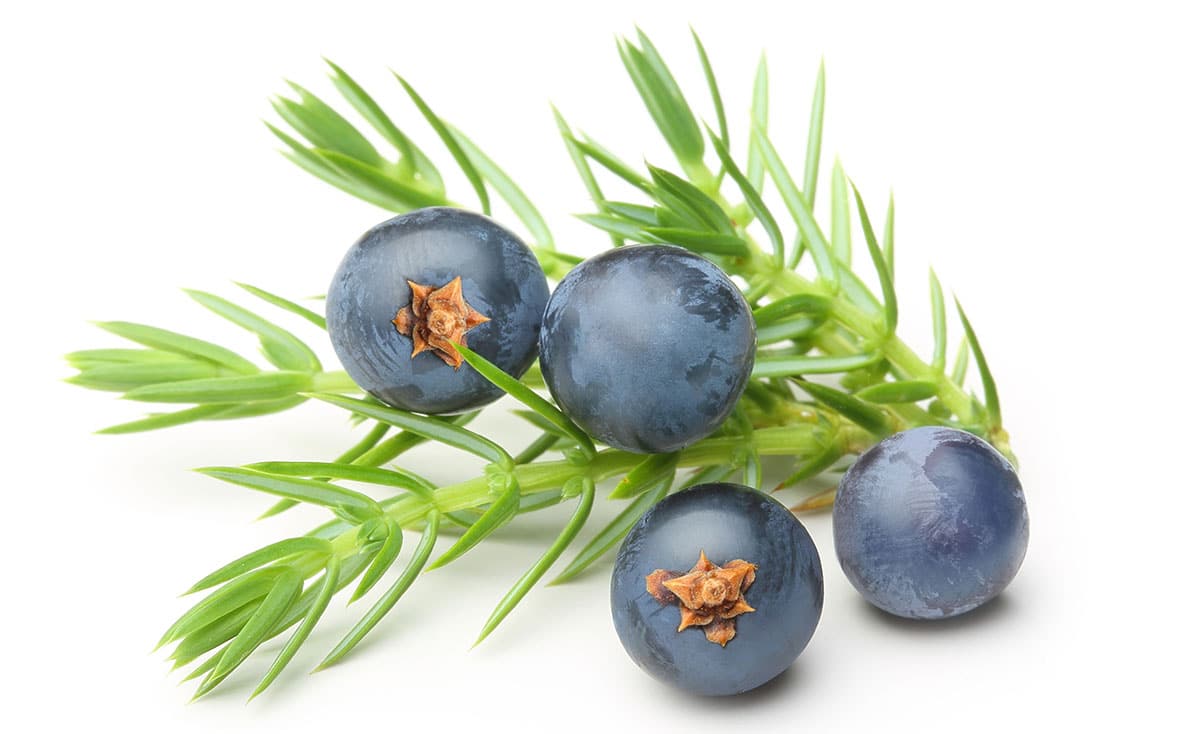
Kastoree Mango
Also known as the Blue Mango, the Kastoree is native to Indonesia but also grown in Florida today. While it has a blue to purple skin, the pulp is orange like other mangoes. Mangoes are the most commonly eaten fruit in the world, with India being the leading producer. It’s a stone fruit, meaning it has one hard seed surrounded by tasty fruit. Peaches, cherries, and plums are all stone fruits as well. For information on how to select, store, and cut mangoes plus a whole lot more check out Mango 101: Everything You Need to Know About Mangoes. And, did we mention that they make fantastic tropical smoothies? The Best Mango Smoothie Recipe.
Laurestine
The Laurestine is a native to the European and African regions bordering the Mediterranean Sea. It is a deep blue colored berry about the size of a blueberry but with a more oblong than round shape. The berries are certainly edible, but appear to be used for medicinal or landscaping purposes rather than culinary uses. Seriously, try finding a recipe for these little cuties.

Nonna Agnes Blue Beans
These blue beans hail from northern Italy. The blue beans grow in a white pod making a fairly aesthetic combination. They can be eaten in the pod like a snap bean or shelled and used as any other bean.
Ribier Grape
Ribier Grapes are deep blue grapes from France. They are noted for being sweet, juicy, and with a low seed count making them good both out of hand and in wine.
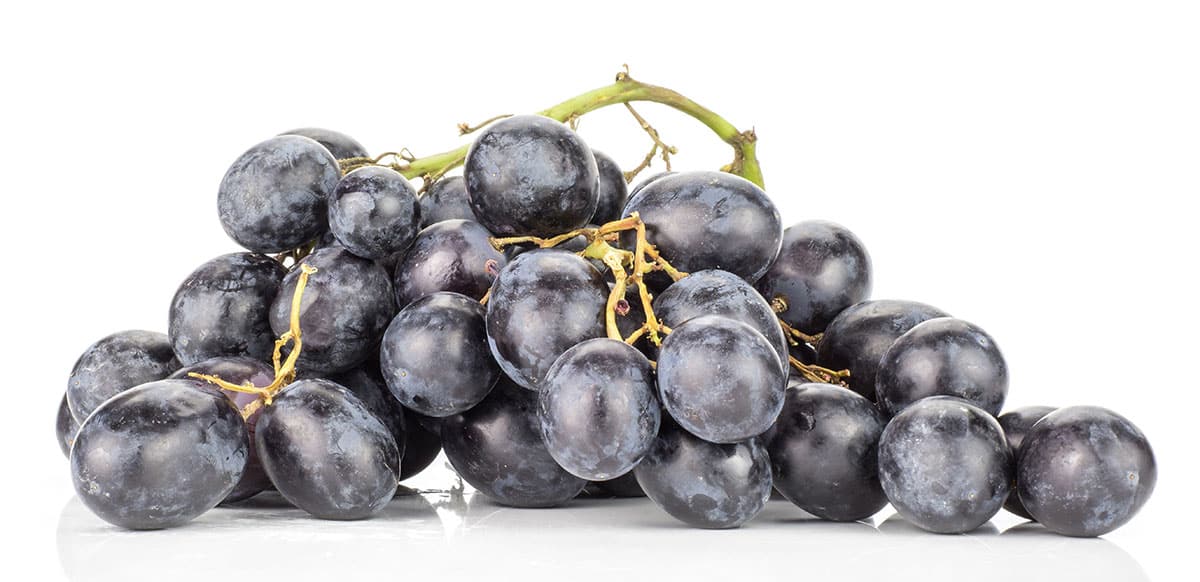
Saskatoon Berry
Saskatoon Berries appear similar to blueberries and like blueberries (blue fruits in general) are loaded with antioxidants. They are native to Canada and are grown in the Yukon, Alaska, and British Columbia. Not surprisingly they are a very cold resistant fruit. These sweet, almost almond flavored, berries are used in Canada in saskatoon berry pie, jams, wines, and dried for uses such as trail mix.
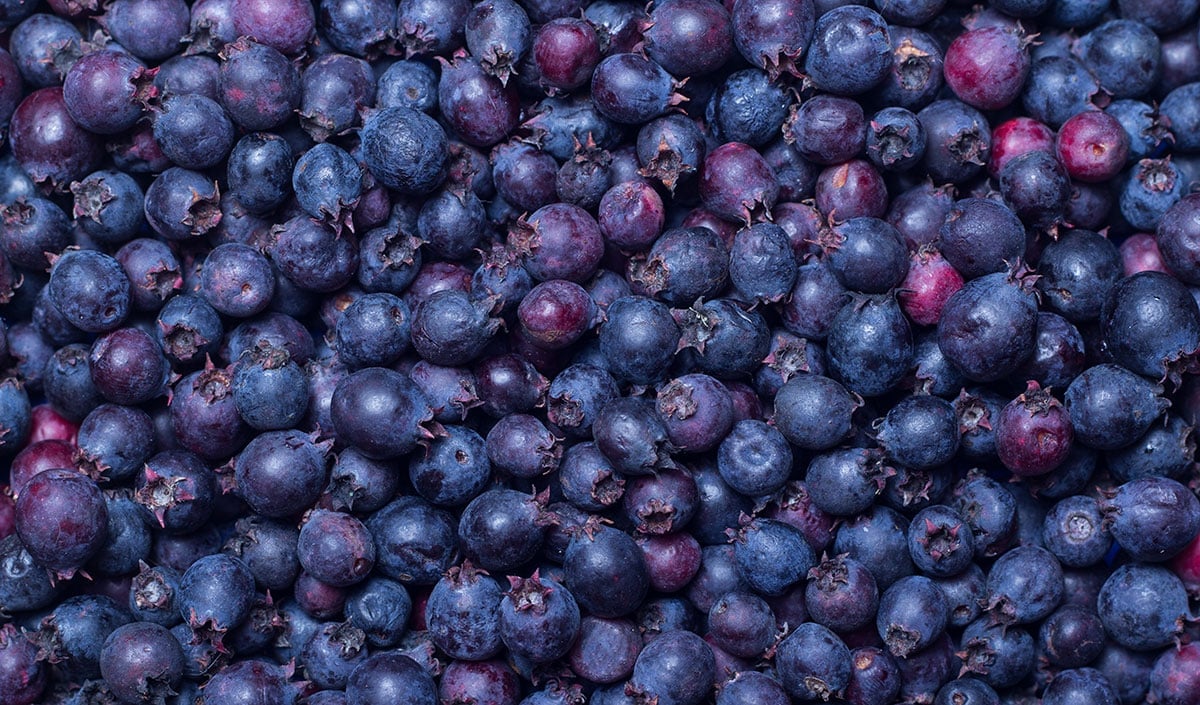
Sloe
Sloes are native to Europe, Western Asia, and NE Africa. Their claim to fame is being the key ingredient in Sloe Gin. That seems about all that needs to be said for the distinguished sloe. You could eat them raw, but the first will dry your mouth out before you can get the second one down. This fruit is not generally eaten fresh and is best used as a flavoring which the British discovered in the creation of sloe gin.
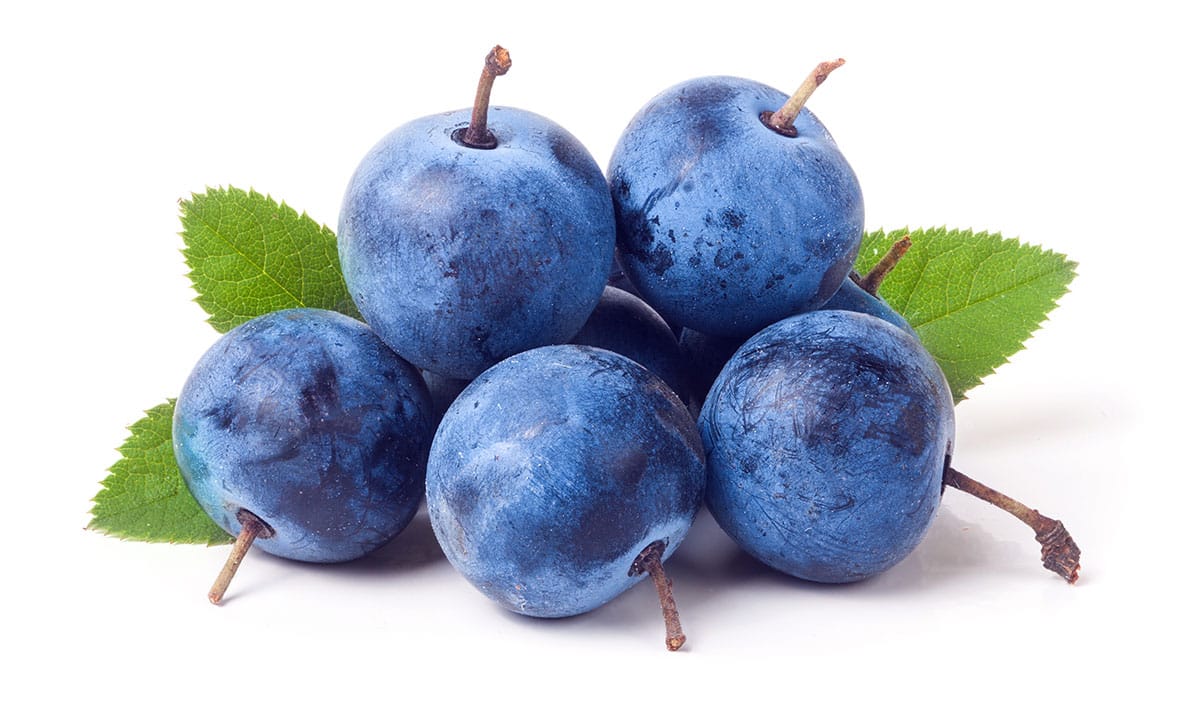
Texas Blue Giant Fig
These are a uniquely colored fig that grows slightly larger than other varieties (insert the “everything is larger in texas” pun here). Figs originated from the Mediterranean area thousands of years ago, but are now grown throughout the world to include in Texas. They can be eaten fresh, dried, in jams & jellies, and myriad ways in a variety of desserts.
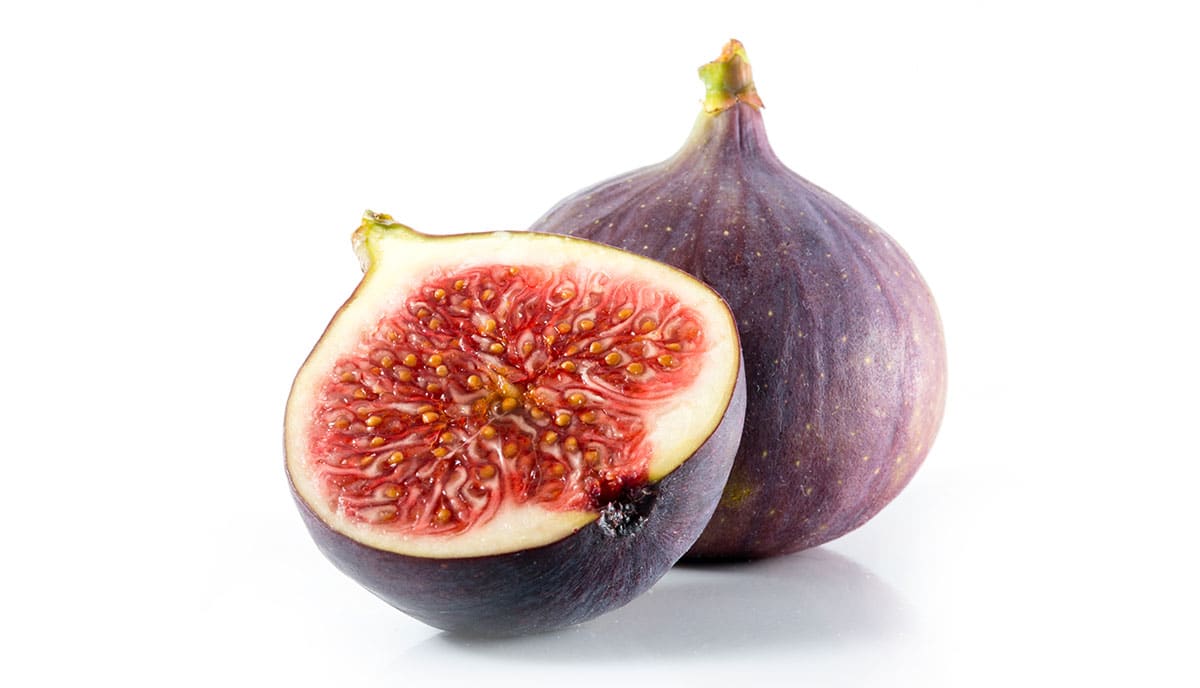
Trivia Answer
Answer is A. Carl Perkins wrote the song “Blue Suede Shoes”.
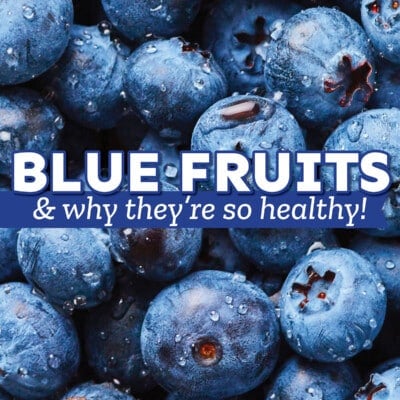
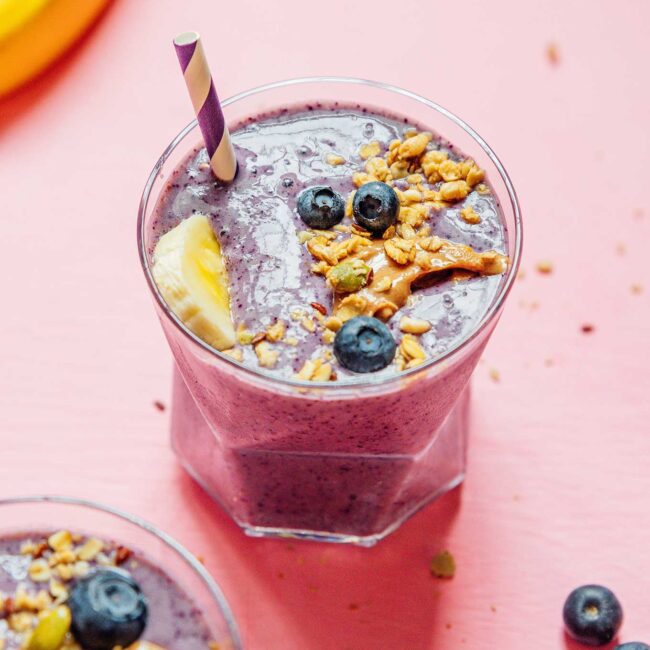
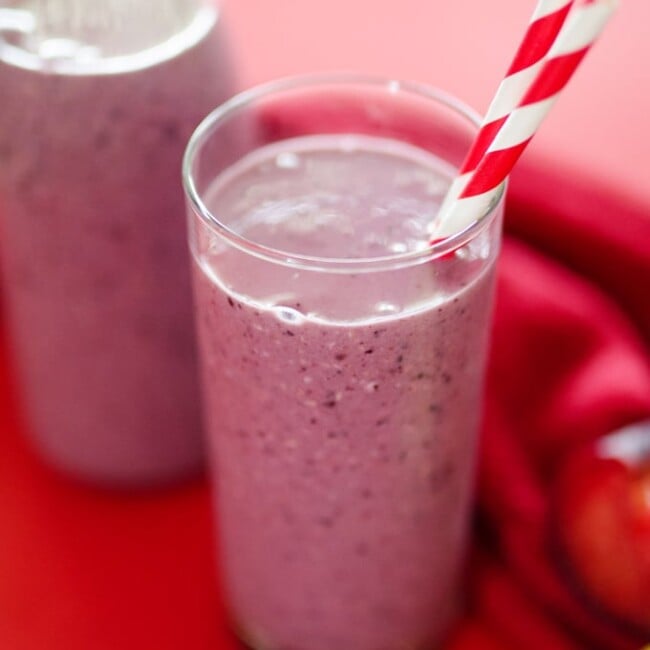
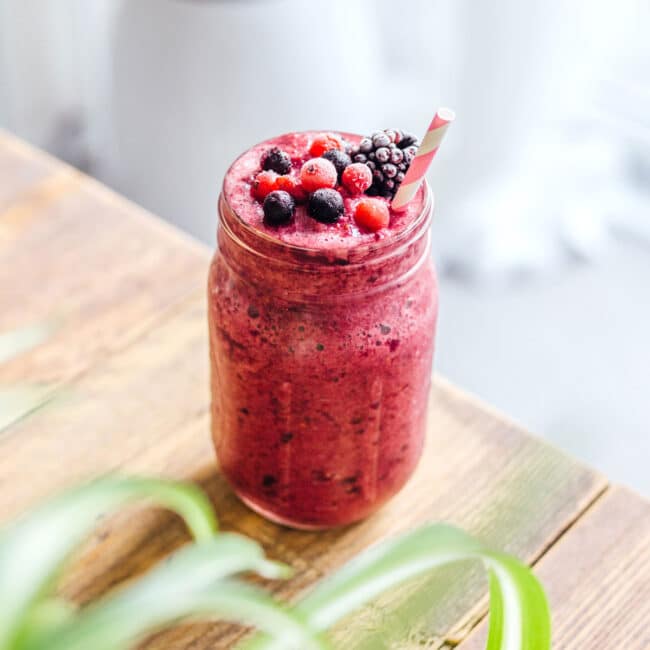
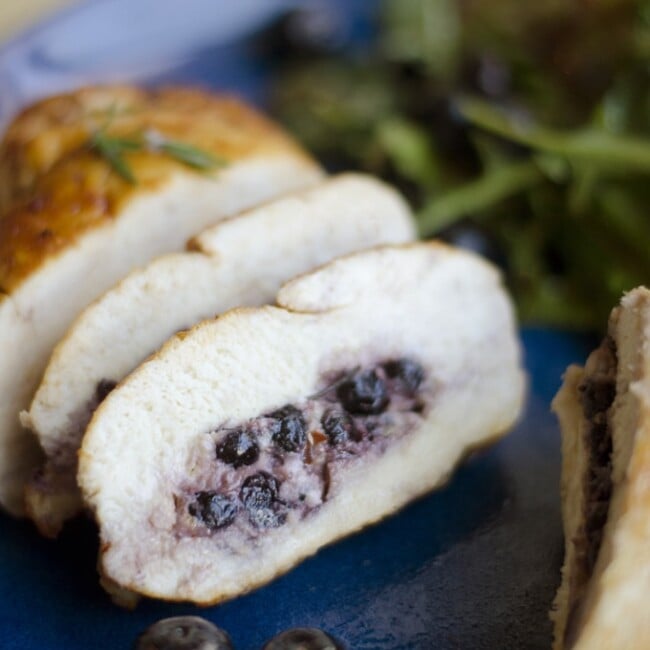
Leave a Comment